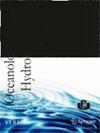2006-2014 年波罗的海鳕鱼幼体和早期幼鱼生长率与浮游动物生物量波动的年度、季节和空间差异
IF 1
4区 环境科学与生态学
Q4 OCEANOGRAPHY
引用次数: 0
摘要
摘要 一种公认的理论认为,由各种环境驱动因素决定的较快的生长速度可提高幼鱼和稚鱼的存活率。在本研究中,我们研究了 2006 年至 2014 年期间,波罗的海分区域(博恩霍尔姆盆地,BB;斯武普斯克海沟,SF;格但斯克盆地,GB)和季节(春季和夏季)鳕鱼幼鱼和幼鱼(2 - 136 d;SL:4.1 - 39.2 mm)生长速度的差异。所有标本的平均生长速度为 0.25 mm/d,2012 年至 2014 年期间的数值明显低于 2006 年至 2011 年期间的数值。浮游动物的生物量,尤其是大型浮游动物的生物量,在 2006-2008 年之后有所减少,这与表层的普遍温度条件有关。浮游动物生物量减少的同时,浮游动物的结构也发生了变化:T. longicornis、C. hamatus 和 Pseudocalanus 属的数量减少,而 Acartia 属的数量增加。 结果表明,浮游动物生物量和结构的年际差异很可能是导致 2012 年至 2014 年期间观察到的鳕鱼幼体生长率比 2006 年至 2011 年期间下降的原因。生长率下降可能是波罗的海东部鳕鱼在经历了 2011-2012 年期间的高繁殖率之后,在 2013 年至 2015 年期间繁殖率下降的原因之一。本文章由计算机程序翻译,如有差异,请以英文原文为准。
Annual, seasonal and spatial differences in the growth rate of Baltic cod larvae and early juveniles in relation to zooplankton biomass fluctuations in 2006-2014
Abstract It is an acknowledged theory that a faster growth rate, determined by various environmental drivers, may boost the survival of larval and juvenile fish. In this study we examined the differences in the growth rate of larval and juvenile cod (age 2 – 136 d; SL: 4.1 – 39.2 mm) between the years 2006 and 2014, sub-areas of the Baltic Sea (Bornholm Basin, BB; Słupsk Furrow, SF; Gdansk Basin, GB), and seasons (spring and summer). The average growth rate for all specimens was 0.25 mm/d, with significantly lower values between 2012 and 2014 than between 2006 and 2011. A reduction in zooplankton biomass, especially the large zooplankton fraction, was observed after the 2006–2008 period, which was related to the prevailing temperature conditions in the surface layers. The reduction in zooplankton biomass was accompanied by changes in the structure of zooplankton: less T. longicornis, C. hamatus, and Pseudocalanus spp., and more Acartia spp. The results suggest that the inter-annual differences observed in zooplankton biomass and structure are likely responsible for the observed reduction in the growth rate of cod larvae between 2012 and 2014 compared to the years between 2006 and 2011. The growth rate reduction could be one of the reasons for the decline in the recruitment of eastern Baltic cod between the years 2013 and 2015, after the high recruitment years of the period 2011-2012.
求助全文
通过发布文献求助,成功后即可免费获取论文全文。
去求助
来源期刊
CiteScore
1.70
自引率
11.10%
发文量
8
审稿时长
>12 weeks
期刊介绍:
Oceanological and Hydrobiological Studies is an international journal published by the Institute of Oceanography, University of Gdańsk in Poland. The journal has 4 issues per year and contains papers on all aspects of the marine environment and hydrobiology. All manuscripts are reviewed by editors and independent experts. Based on the referees'' recommendations, the Editor will make a decision on whether to accept a contribution. All articles are published in English. The journal is open to all matters concerning the water environment, thus providing the readers with a wide spectrum of topics in every issue.

 求助内容:
求助内容: 应助结果提醒方式:
应助结果提醒方式:


